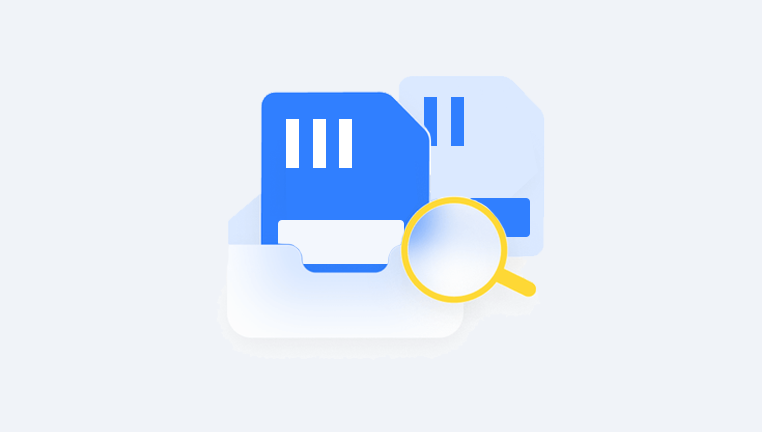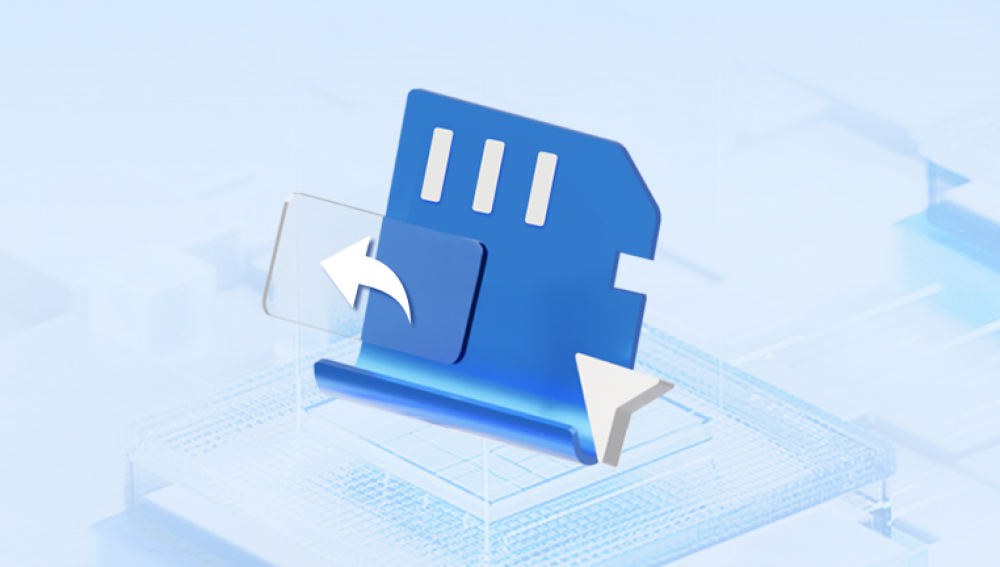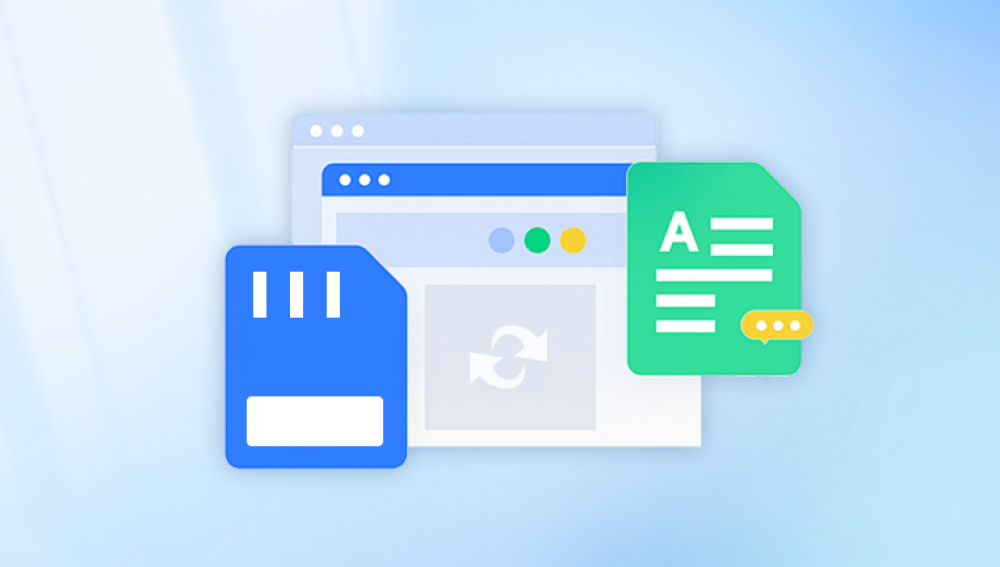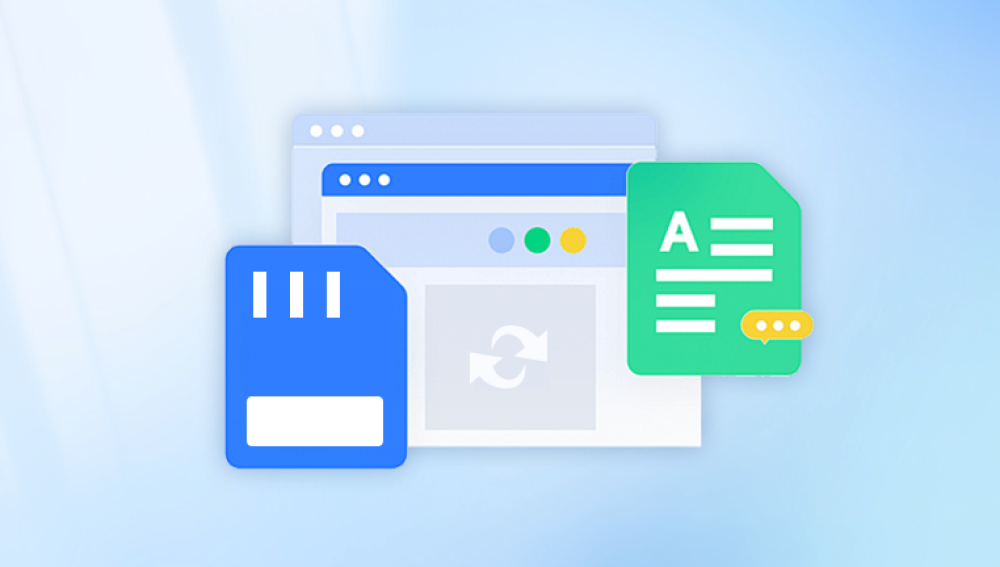Secure Digital (SD) cards are widely used in digital cameras, smartphones, drones, tablets, and many other portable devices to store essential data such as photos, videos, documents, and applications. Despite their convenience and compact design, SD cards are vulnerable to data loss caused by accidental deletion, formatting, corruption, virus attacks, and physical damage. If you find yourself asking, "How do I restore my SD card data?" you’re not alone.
Chapter 1: SD Card Data Loss
1.1 Common Causes of Data Loss
Accidental Deletion: Files are mistakenly erased.
Formatting: SD cards are formatted intentionally or unintentionally.
Corruption: File system errors, unsafe ejection, or sudden power loss.
Virus/Malware: Infection can hide or delete files.
Physical Damage: Water exposure, bending, or heat damage.
Unsupported File System: Using SD card with incompatible devices.

1.2 Recognizing the Signs
Files and folders disappear.
Error messages like “SD card not formatted” or “SD card is blank.”
SD card not recognized by the device or computer.
Extremely slow read/write speeds.
1.3 Types of SD Cards
SD (Standard Definition, up to 2GB)
SDHC (High Capacity, 2GB to 32GB)
SDXC (Extended Capacity, 32GB to 2TB)
MicroSD (smaller form factor, used in phones and cameras)
Chapter 2: Immediate Steps After Data Loss
2.1 Stop Using the SD Card
Avoid writing new data, as it can overwrite deleted files, making recovery difficult or impossible.
2.2 Safely Remove the Card
Remove the SD card from the device properly to prevent additional corruption.
2.3 Use a Card Reader
Use a reliable card reader to connect the SD card to your computer. A direct connection often works better than accessing through a phone or camera.
2.4 Do Not Format the Card
If prompted to format the SD card, cancel the prompt. Formatting could erase retrievable data.
Chapter 3: Use File Recovery Software
File recovery software is the most effective DIY method for retrieving lost data from SD cards.
3.1 Recommended Software Tools
Losing valuable data from an SD card can be a frustrating experience, especially when it contains irreplaceable memories, important documents, or project files. Fortunately, Drecov Data Recovery offers a reliable and user-friendly solution to help you restore your SD card data quickly and efficiently. Whether the loss was due to accidental deletion, formatting, corruption, or virus attack, Drecov Data Recovery is designed to recover files with just a few simple steps.
One of the key advantages of Drecov Data Recovery is its powerful scanning engine, which includes both quick and deep scan modes. The deep scan is especially helpful in cases of severe data loss or corruption, ensuring that even long-deleted files can be retrieved. Additionally, the software is designed to recover data without altering or overwriting existing files on your SD card.
3.2 Steps to Use Recovery Software
Download & Install: Install recovery software on a separate drive.
Connect the SD Card: Use a card reader.
Select the Card: Choose the SD card as the target for recovery.
Scan the Card: Run a quick scan first; if needed, follow up with a deep scan.
Preview & Recover: Check the preview window and select the files you want to restore.
Save to a Safe Location: Save the recovered files to a different storage device.
3.3 Tips for Effective Recovery
Use deep scan for corrupted cards.
Recover to a separate disk to avoid overwriting.
Keep the software updated.
Chapter 4: Recover from Backups
If you have backups, recovery becomes straightforward.
4.1 Cloud Storage Services
Google Photos/Drive, OneDrive, Dropbox often back up your mobile or desktop data.
Log in and search for deleted or earlier versions of files.
4.2 Computer Backups
Use built-in systems like File History (Windows) or Time Machine (Mac).
Navigate to the backup folder and restore the desired files.
4.3 Manual Backup Devices
Check external hard drives or USB drives for copied data.
Always store backups on different media.
Chapter 5: Professional Data Recovery Services
If your SD card is physically damaged or recovery software fails, professional services are an option.
5.1 When to Choose Professional Help
SD card isn’t recognized.
Software fails to recover crucial files.
Card is broken or water-damaged.
5.2 What to Expect
Initial diagnosis (sometimes free).
Quoted price based on difficulty.
Data recovery performed in a cleanroom lab.
5.3 Top Service Providers
DriveSavers
Secure Data Recovery
Ontrack
Gillware
5.4 Pros and Cons
Pros:
High success rate
Can handle physical damage
Cons:
Expensive (can range from $300 to $2000)
Time-consuming
Chapter 6: Advanced Manual Recovery Techniques
6.1 Use Command Line Tools (Windows)
Open CMD as Administrator
Run: chkdsk E: /f (replace E with your card's drive letter)
Use attrib -h -r -s /s /d E:\*.* to unhide files
6.2 Linux-Based Tools
TestDisk for partition recovery
ddrescue to clone failing cards sector by sector
6.3 Hex Editors
For tech-savvy users, use a hex editor to scan for file headers manually and reconstruct files.
Warning: These methods carry risks and should be performed with care or under supervision.
Chapter 7: SD Card Maintenance and Prevention Tips
7.1 Always Eject Safely
Prevent corruption by removing cards safely via your operating system.
7.2 Backup Regularly
Schedule automatic backups to cloud or external drives.
7.3 Avoid Low-Quality Cards
Use cards from trusted brands like SanDisk, Samsung, Lexar, and Kingston.
7.4 Protect From Elements
Avoid exposing SD cards to moisture, heat, and dust.
7.5 Update Device Firmware
Device firmware updates often contain file system improvements and bug fixes.
7.6 Use Antivirus Protection
Keep your system scanned and updated to prevent malicious software from deleting or corrupting SD card files.
Chapter 8: Drecov Data Recovery – A Reliable Option
Drecov Data Recovery is a versatile tool specifically engineered to recover data from storage devices like SD cards, USBs, and hard drives. With its user-friendly interface, both beginners and professionals can recover lost files effortlessly.
Features:
Supports all types of SD cards
Quick and deep scan modes
Preview files before recovery
Recovery from formatted or inaccessible cards
How to Use Drecov Data Recovery:
Install Drecov Data Recovery on a different drive.
Connect your SD card via a reader.
Launch the software and choose the SD card.
Perform a scan.
Preview the recoverable files.
Restore the files to a safe location.
Drecov Data Recovery also provides technical support and regular updates, ensuring that users always have access to the best recovery methods and compatibility.




